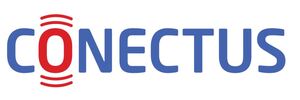Almost all of today’s superconducting products still use LTS materials, predominantly NbTi (requiring > 3000 t/ a). The biggest commercial market are magnets used in medical diagnosis, Magnetic Resonance Imaging (MRI) amounting > 3 billion €/ a. The second largest part is for Nuclear Magnetic Resonance (NMR) in material analytics amounting > 500 M€/ a. So far, these markets are mostly for magnets ranging from small magnets for university research to enormous systems for large laboratory facilities. Large amounts of LTS materials (NbTi, Nb3Sn) have been and currently are required for Large Scale applications in High Energy Physics like the Large Hadron Collider (LHC) at CERN or in nuclear fusion like ITER, Wendelstein 7-x and others.
The new HTS materials are used in the form of HTS tapes and wires and also in the form of bulk materials. The current production facilities on HTS tapes used for pilot installations and first commercial devices are still in the range of 1000 to 2000 km/ year but are expected to grow rapidly in the next five to ten years.
New Trends in Established Markets
In MRI most systems today operate at magnetic fields up to 1.5 Tesla, but the number of 3 Tesla systems is increasing, and experimental systems for 7 Tesla and even beyond 11 Tesla are tested. A new trend are also open, cryogen-free magnetic resonance systems that reduce patients‘ sense of claustrophobia and allow for „load bearing“diagnostic analysis of patients. At the same time low-field open MRI systems which allow monitoring the patient’s status during a surgery, have come up.
In Research & Development a trend towards higher magnetic fields is observed e.g. 1 GHz NMR systems operating with fields beyond 23.5 Tesla and offering extended resolution for chemical analysis, are now commercially available. Future systems with even higher fields and analytical power will necessarily be hybrid magnets utilizing HTS insert coils. Most larger LTS magnet systems already today use HTS current leads to reduce the heat load on the cryogenic part. Almost all large accelerators today use superconducting radio frequency cavities to achieve highest power levels.
Emerging New Businesses
In contrast to the established market sectors, today based on LTS wires, there are many exciting new business fields which will mostly be based on the new HTS materials, but also on new system designs. The highly cost-competitive commercial markets of energy, industrial processing and transportation are addressed in addition to new medical applications.
Currently energy is seen as the most promising market for new superconducting components. For future energy systems superconductivity also provides unique solutions with efficient cables for growing demand in congested urban areas, with new innovative components like fault current limiters to stabilize our energy grids, and with flywheel energy storage systems and efficient motors and generators. Superconductivity helps to overcome technological barriers as an enabling technology already today and even more in the future.
The new superconductors and new systems have already proven superior performance and reliability in a number of pilot installations all over the world. The economy of scale for HTS wire and tape production will lead to further improvement of price-performances and help to promote the commercial deployment of superconductor technologies in these fields.
However, even on the traditional LTS sector new businesses are emerging. Independently from the established MRI for medical diagnostics new businesses are seen on the medical sector. Superconducting technologies are increasingly finding applications also in therapies: Superconducting magnets are used in hadron and proton therapy for the treatment of numerous types of tumor.
Future Perspectives
Although contributions from HTS are anticipated to grow, LTS will continue to play the dominant role for the next years and are predicted to continue their steady growth. Estimates for HTS in the mid and long term well exceed the size of the established LTS businesses.
